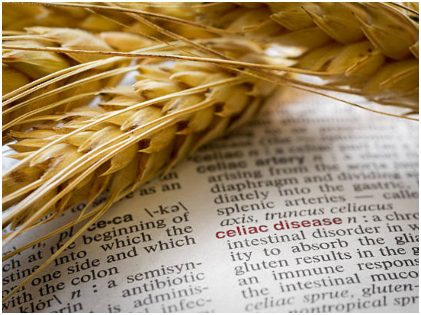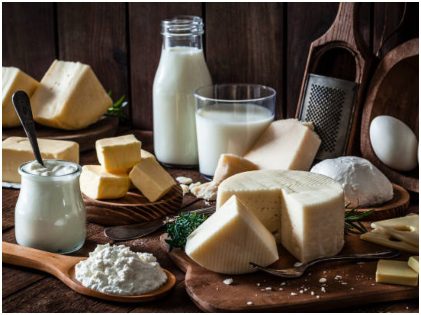Do you suffer from acute pain in your stomach while chowing down a large wheat sandwich? Well, you are not alone! Many people suffer from something called gluten intolerance or better known as celiac disease. When you say gluten, it has all the products that you probably can never say, but now you have to because of this certain condition. It could mean saying no to products such as bread, pasta, and other grain products. While you may be ruing over the fact that you can’t eat gluten, however, the food aisles in supermarkets are now packed with gluten-free products. It may not be the real deal, but sometimes it can be better than the real deal. Let us, first understand the condition called celiac disease and then we will dwell on the foods that are allowed in your diet.
What is Celiac Disease?
 Celiac disease is a kind of digestive condition where a certain type of protein in your food triggers an autoimmune response, which makes the cells of the body attack their own cells organs, and tissues. Someone with celiac disease eats food that reaches the small bowel and it starts triggering off an immune response that ultimately affects the intestinal lining, giving way to several unpleasant symptoms. Here’s the deal, you can still eat a lot of other stuff that is easy on your digestive system.
Celiac disease is a kind of digestive condition where a certain type of protein in your food triggers an autoimmune response, which makes the cells of the body attack their own cells organs, and tissues. Someone with celiac disease eats food that reaches the small bowel and it starts triggering off an immune response that ultimately affects the intestinal lining, giving way to several unpleasant symptoms. Here’s the deal, you can still eat a lot of other stuff that is easy on your digestive system.
The only problem is while it may be easy to follow a gluten-free diet at home, you may find it tough to find foods that are agreeable to your system outside the comfort of your food. Gluten can find its sneaky way into many packaged foods which sometimes are not even listed on the back of the food packet. Whole foods are the best bet as you are going to find them right here.
Add More Fruits and Veggies
 The U.S. Dietary Guidelines for Americans ask people to eat almost two and a half cups of vegetables and at least two cups of fruit every day. The best part of including fruits and vegetables is that they are naturally gluten-free and have a host of beneficial nutrients that you must add to your plate. So, always fill up your plate with a generous helping of fruits and vegetables. When in doubt always add the extra amount of veggies. Whether it is adding a bit of broccoli with your egg scramble, a generous helping of cabbage with your taco bowl, or adding some roasted Brussels sprouts to give your meals a veggie boost.
The U.S. Dietary Guidelines for Americans ask people to eat almost two and a half cups of vegetables and at least two cups of fruit every day. The best part of including fruits and vegetables is that they are naturally gluten-free and have a host of beneficial nutrients that you must add to your plate. So, always fill up your plate with a generous helping of fruits and vegetables. When in doubt always add the extra amount of veggies. Whether it is adding a bit of broccoli with your egg scramble, a generous helping of cabbage with your taco bowl, or adding some roasted Brussels sprouts to give your meals a veggie boost.
Try Non-Vegetarian Foods
The good news about non-vegetarian foods is that they are naturally gluten-free. The protein choices include meat, seafood, and poultry. Animal proteins are also chock-a-block with B-vitamins. However, people who are vegan or vegetarian do not need to worry as they can fulfill their protein needs with nutritious foods such as tofu, legumes, beans, nuts, and seeds.
Hop Onto The Dairy Brigade
 Milk has its fans and some people may criticize it too saying it is harmful to your health in the long run. Although, science altogether has a different take on it. Milk can be part of a balanced diet if you do not overdo it of course; as they say, everything is in moderation. Many people who have celiac disease also suffer from a condition called lactose intolerance. But it is for you to find out, you can even do a food intolerance test to know more about it. You can add it to your diet if your digestive system has no problems digesting it. You can have it in all its glory, yogurt, cheese, whey, and more. Eggs are gluten-free too, also they are a terrific source of protein.
Milk has its fans and some people may criticize it too saying it is harmful to your health in the long run. Although, science altogether has a different take on it. Milk can be part of a balanced diet if you do not overdo it of course; as they say, everything is in moderation. Many people who have celiac disease also suffer from a condition called lactose intolerance. But it is for you to find out, you can even do a food intolerance test to know more about it. You can add it to your diet if your digestive system has no problems digesting it. You can have it in all its glory, yogurt, cheese, whey, and more. Eggs are gluten-free too, also they are a terrific source of protein.
The Benefits of Including Legumes and Family
If you are someone trying to go vegetarian or vegan, legumes are a great source of nutrition. Also, you can always go for gluten-free flours if you are trying to make your pieces of bread. There are plenty of gluten-free options such as quinoa, teff, buckwheat, amaranth, millets, and more. Also, legumes like black beans, chickpeas, peas, different types of potatoes, and the ever-reliable nuts and seeds are a great source of protein and a variety of nutrients.
So, you see, you can still make dietary adjustments and make gluten-free eating a part of your lifestyle. There are just so many healthy options to choose from that you make start making healthier choices and in the process get fitter and healthier.
